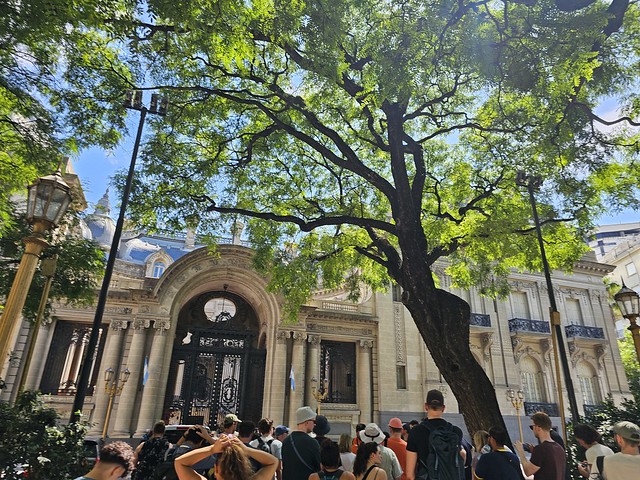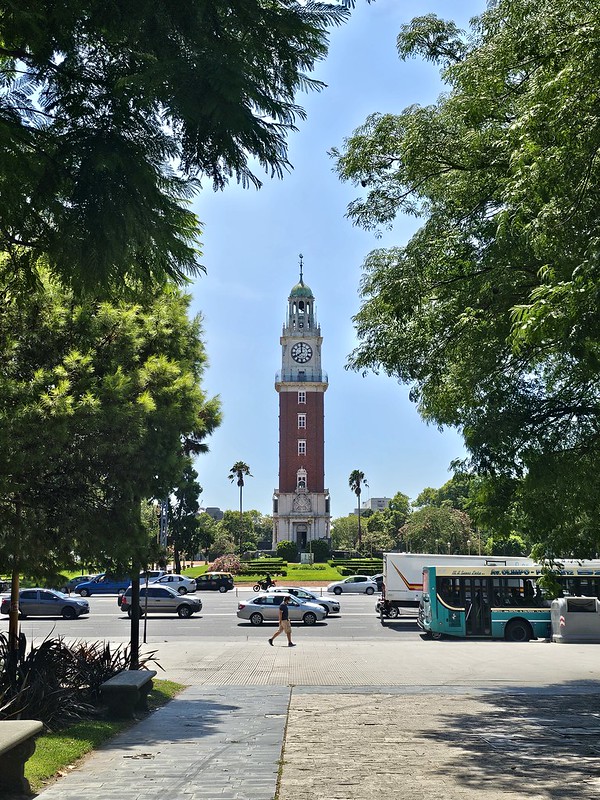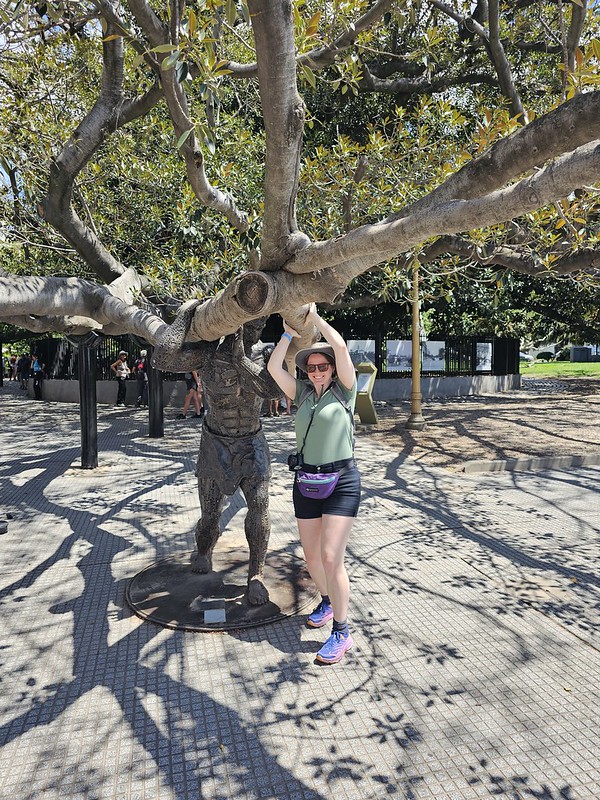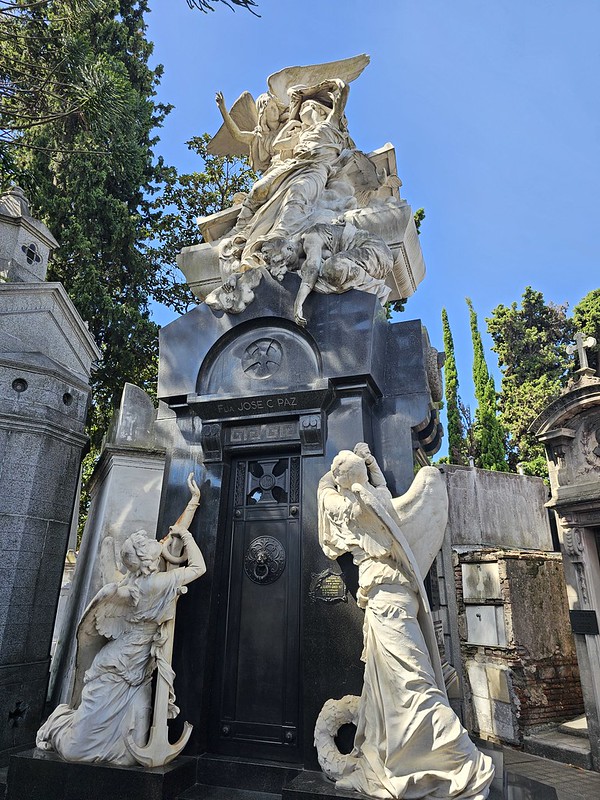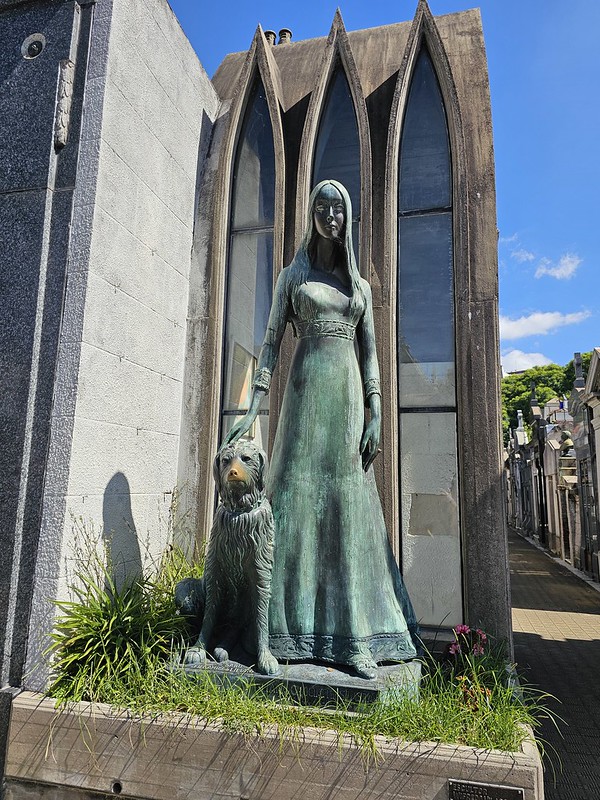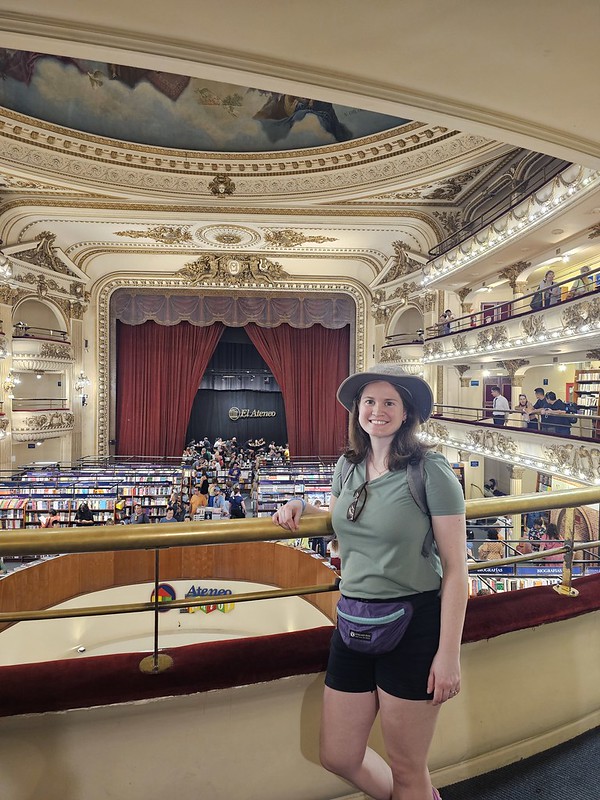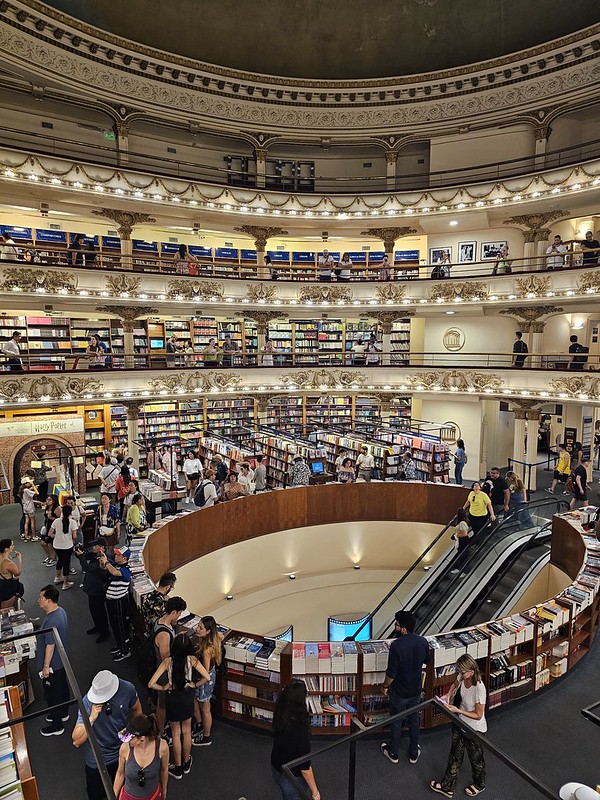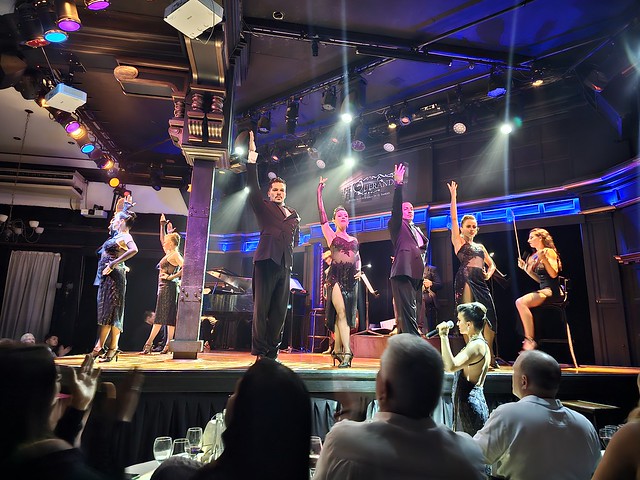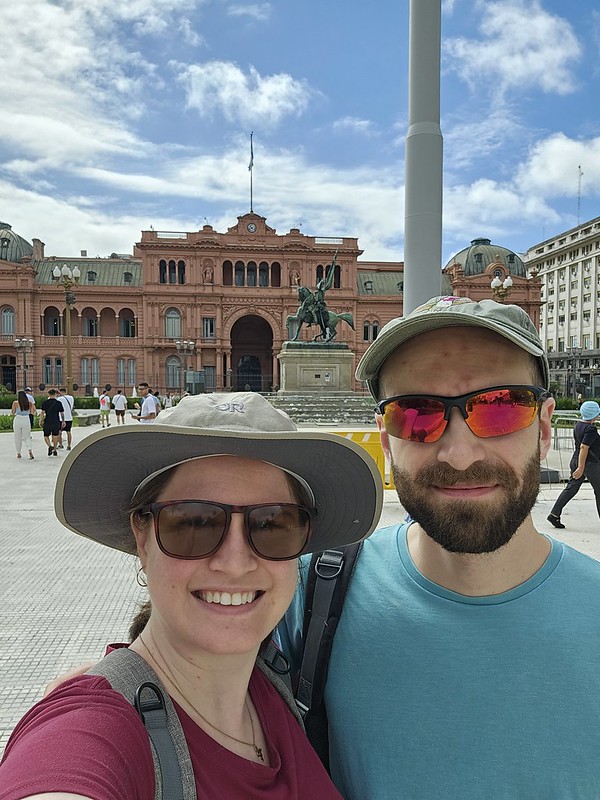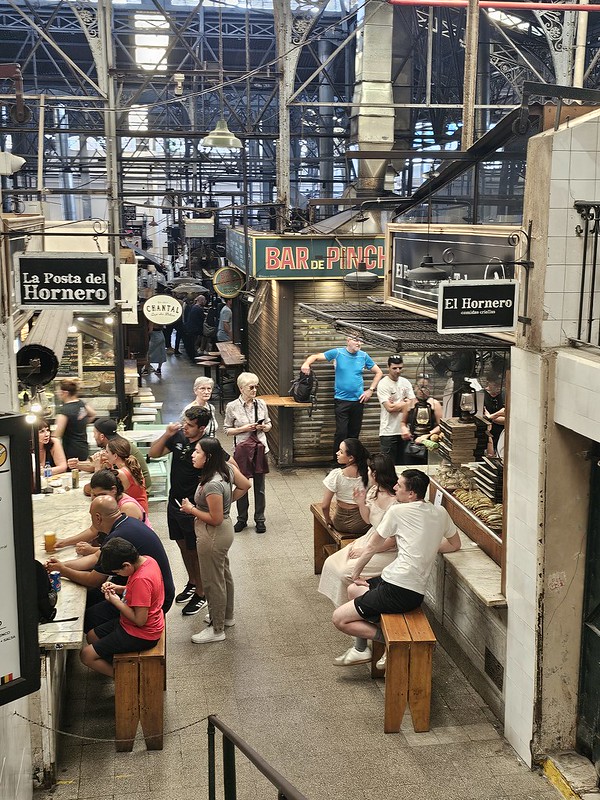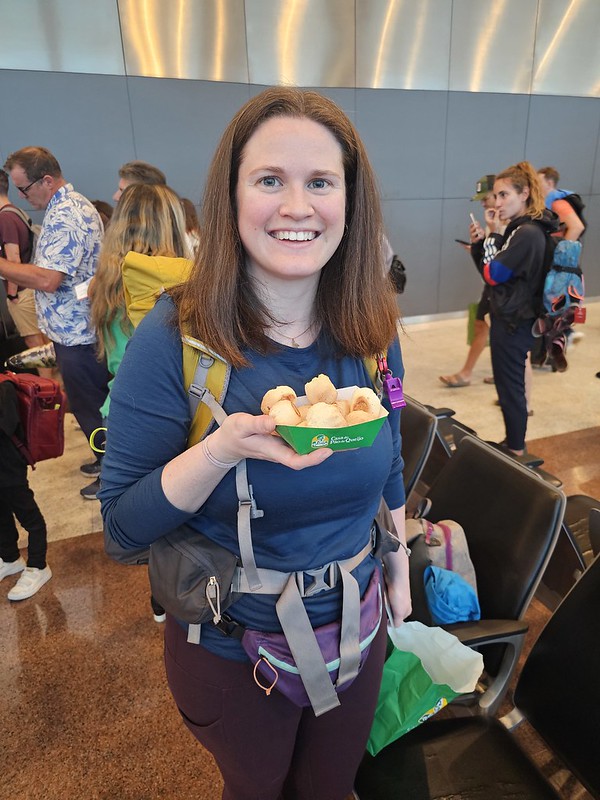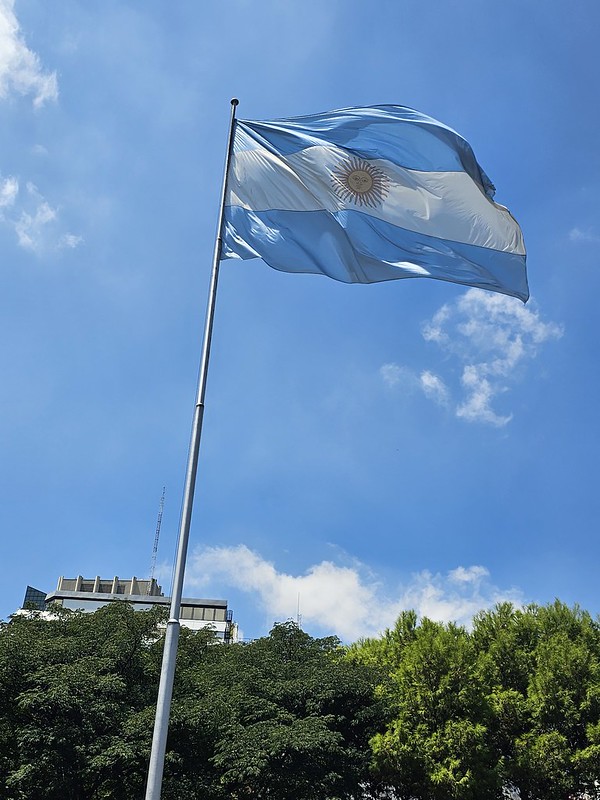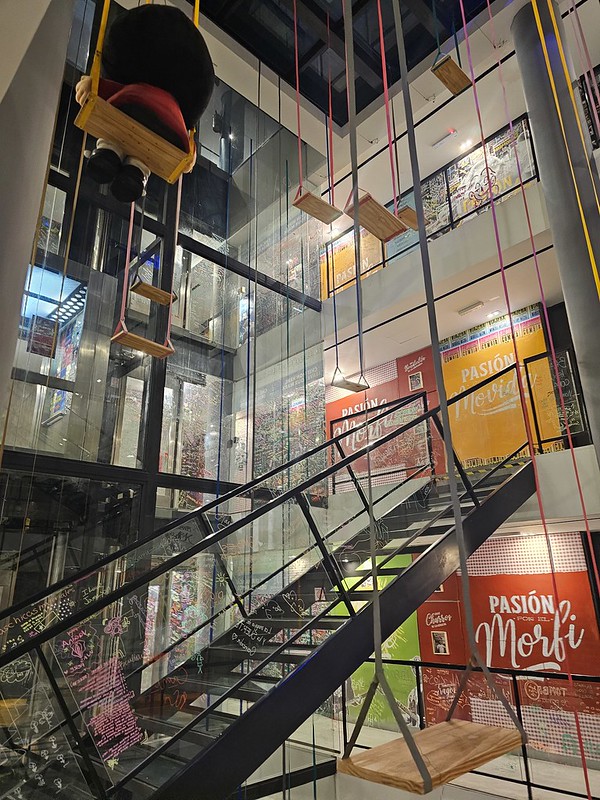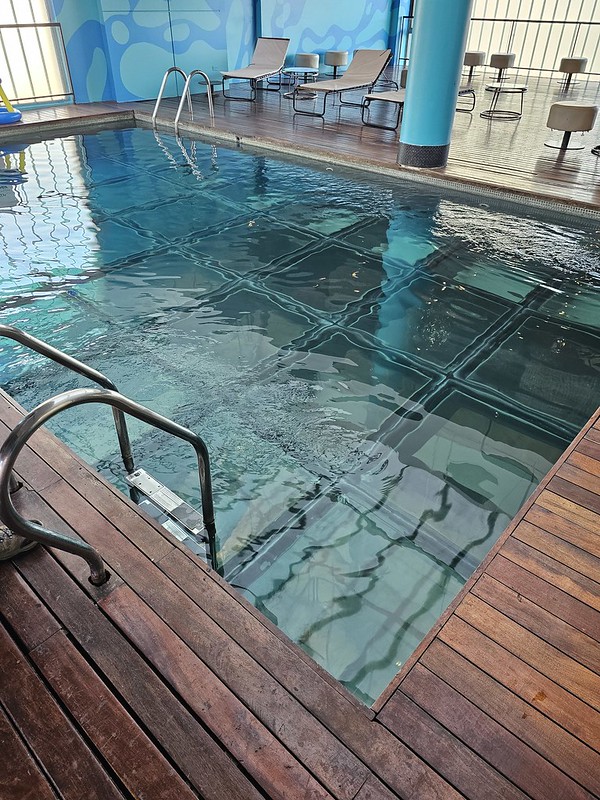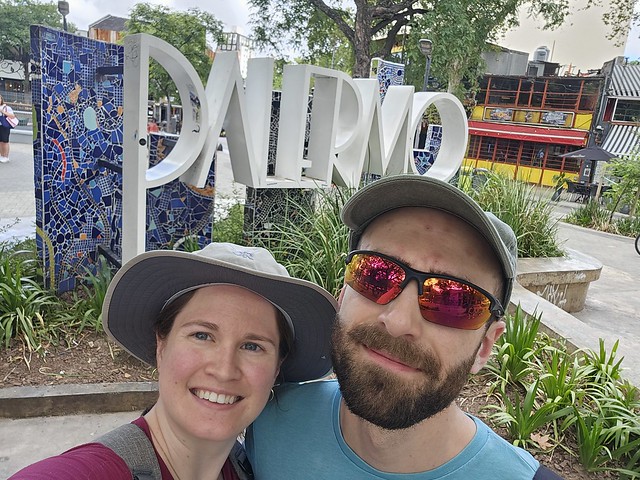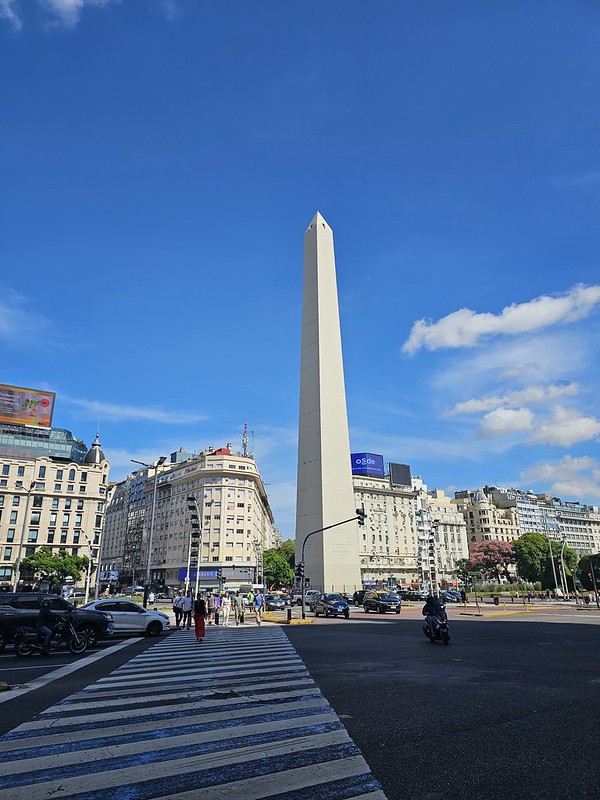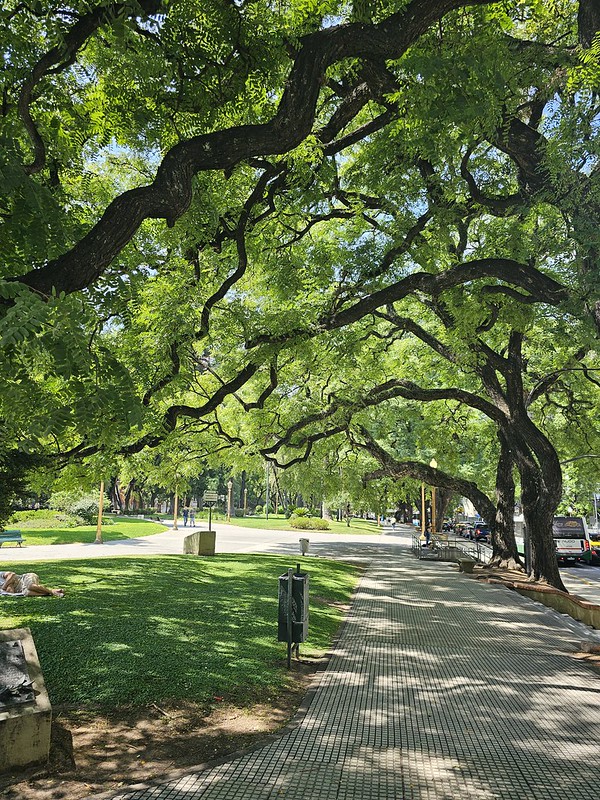My last post ended up being a step by step instructional on how not to get scammed out of your money in Argentina, so now let’s talk about the actual fun things we did in the city! Our first activity in beautiful Buenos Aires was a walking tour to try and get a lay of the land and learn a bit of the city’s history. As with most major cities these days, there’s a free walking tour that leaves daily. Buenos Aires is such a big city that they actually have multiple tours, we decided to do one of the Retiro and Recoleta neighourhoods, but I’d really like to the do the city center tour as well.
I find free tours are always excellent because they rely solely on tips (so tip well)! I’ll admit, our tour guide was a bit long winded and the tour was close to 4 hours, which is a bit on the long side, but we learned a lot of interesting history that served us well through the rest of the trip. Probably the most interesting tidbit was about the Falklands War between Argentina and Great Britain in the 1980’s. GB claims ownership over the Falklands, which Argentina disputes, so in 1982, they invaded the Falkland Islands and were at war with Britain for 10 weeks until Argentina surrendered.
What was interesting wasn’t so much the war, but rather all the government propaganda that we observed about it after the fact. The Falkland Islands are known as Islas Malvinas in Argentina and even though it’s still a part of Great Britain – and hundreds of Argentinians lost their lives in the war – there is still (40 years later) government-published propaganda all over the country stating “las Islas Malvinas son Argentinas”. I’m definitely not going to make any sort of political comment on the sovereignty of the islands, but it was interesting to observe public opinion throughout Argentina. It reminded me a little of Quebec trying to claim Labrador as part of Quebec on contemporary maps, even though Labrador is a part of the great province of Newfoundland and Labrador! But I digress, lol.
Buenos Aires is a city that has been heavily influenced by the French (architecturally anyways). We witnessed the same thing in Santiago. Even though both countries were colonized by the Spanish, they’ve been independent since 1816 and 1810 respectively. So quite a long time. Traditionally Buenos Aires was considered an aristocratic city and was very wealthy, but as we saw with the country’s inflation issues, that’s no longer the case. The thing I thought was missing from the Buenos Aires walking tour (that we got on the Santiago tour), was a discussion of the indigenous history. But they love to brag about Avenido 9 de Julio (the widest street in the world) and how they won the most recent world cup! Messi definitely has a presence in the city!
So the two neighbourhoods we visited looked very wealthy and European. We ended the tour at the gates of the Recoleta Cemetery, which is basically a sub-city of mausoleums. We decided to have lunch first and I had my first serving of risotto and seafood. The food is definitely interesting in Buenos Aires (and Argentina in general). I was expecting a more vibrant food scene in Buenos Aires, but to be honest, it’s a lot of hamburgers and pizza. Seafood was easy to come by (and for a very good price), as was risotto, which is a personal favourite of mine. Otherwise, the only thing in Buenos Aires that seemed at all “Argentinian” was the empanadas. But they were unbelievably delicious, so I made it a point to track down one a day for a snack during the rest of my time in Argentina.
The cemetery really did feel like a city of the dead. Some of the mausoleums were very elaborate, while others were decrepit or downright creepy. You have to pay to go in, but it’s clear the graves are only being managed by surviving family and not the city. Eva Peron’s (Evita) seemed to be the most popular one, but it’s a bit lackluster in comparison to some of the more elaborate monuments. The whole place is a bit spooky, but it was a cool experience.
The main thing I wanted to do during my short time in Buenos Aires was to visit El Ateneo Grand Splendid bookstore. El Ateneo is located in a former theatre and was named as the “the most beautiful bookstore in the world” by National Geographic in 2019. As an avid book lover, I think every bookstore is beautiful, but architecturally, this one definitely has an edge over others! Plus there’s a really cute café located at the back of the store on the old stage.
We actually ended up visiting a lot of bookstores while in South America. What was most striking to me – compared to some of my other travels – was that because Spanish is so widely spoken, pretty much every bookstore we went to stocked Spanish books exclusively. Comparatively, when I visited Finland and Vietnam, there were a lot more English books. It was still fun to visit the bookstores, but it felt a little like being starving at a feast!
After the bookstore, we returned to our hostel for a leisurely swim in the rooftop pool and enjoyed a free drink at the bar before walking nearby to our tango show for the evening. There are a huge number of tango shows in the city and we picked the El Querandi dinner and tango show, mostly because it was located close to our hostel. But it ended up being a great show! The dinner was fantastic – they had all local dishes, so I sampled the humita, which is a local corn dish from Northern Argentina, and the Patagonia stew, which features lamb. The show was also great and takes you through the history of tango, showcasing different styles of how tango has evolved in the past 100 years. In my opinion, it’s just gotten sexier over time!
On day 2, I was determined to visit Palermo. I’m not sure why I was so obsessed with visiting Palermo over other parts of the city, but I heard it was really nice and it drew my attention. First we did a bit of walking around city centre to see the Playa de Mayo and Casa Rosada, and then took a bus over to Palermo. To be honest, I thought Palermo was a bit of a letdown. It’s a nice enough area, with leafy streets and lots of restaurants and shops. We went for a walk all over the neighbourhood, but ended up just getting acai bowls for lunch. We took the bus back to San Telmo a bit early and decided to visit the San Telmo Market instead. I really liked the market! It had a lot of food options and I had the best empanada’s of my entire trip!
And that was pretty much it for our time in Buenos Aires. Like I said, there’s a lot of attractions that we didn’t do. It’s a very large city and our time there was so limited. I would have loved to sample some more wine while we were there, but it will have to wait for a future trip to Mendoza. We got a taxi to the airport in the late afternoon to catch our flight to Patagonia. Our first stop was to Ushuaia, the most southern city in the world! Check back for the next part!
